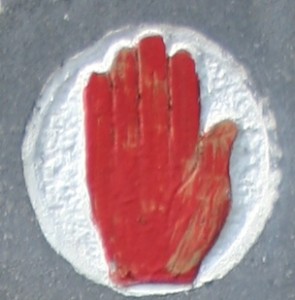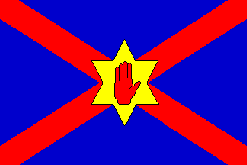One of the most confusing things about Northern Ireland is the contrast between what people say they want and what is.
For instance, a report was released yesterday asserting that 80 per cent of people polled in Northern Ireland would prefer to live in “mixed” neighborhoods: i.e. Protestants and Catholics together. Yet 90 percent of current public housing is segregated. There are more “peace walls” now than when the Good Friday agreement was signed in 1998. When new housing goes up, new walls go up with it, along with services for both sides (two leisure centers, two medical clinics, two bus routes, etc.) This is a tremendous cost at a time when the Exchequer is stumbling.
Gordon Gillespie, a research fellow at Queens, is part of a Flag Monitoring Project that counts the flags that proliferate every marching season. He says that most people, Protestant and Catholic, don’t like the flags. Yet as many go up now as 20 years ago, some staying aloft all year round.
The symbolism of the flags is intricate and ever-changing. There are obvious flags (the tricolor=Republican, the Union Jack=Loyalist). But then things start to get tangled. Both use the Red Hand of Ulster, from the myth of the Irish King who had his sons swim to the island to see who would win and become the next king. One of the sons, falling behind, cut off his hand and heaved it to shore, thus proving his devotion).
The Republicans feel kinship with the Palestinians, so use their symbols, while the Loyalists favor Israel and adopt the blue bars and star of David on the Isreali national flag. The blue flag above is described in the following way by Gordon’s research report:
The flag was unveiled on ‘Ulster Day’, 17 November 1988, when the Ulster Independence Committee (now the Ulster Independence Movement; UIM) was formed. The flag is made up of St. Patrick’s Cross and St. Andrew’s Cross (see above), the six pointed star and the Red Hand of Ulster. The UIM claims to break from traditional Loyalist thought by promoting independence from both Ireland and Britain. The flag is also flown by members of other groups and is popular with some elements in the Ulster Defence Association (UDA).
The Scottish flag, and its cross of St. Andrews would be Protestant; anything with Irish language is generally Nationalist.
Every year, new flags appear. Like most other cheap goods, they’re not made here but in China or Taiwan. Even though only a small percentage of the people who live in Northern Ireland are involved in designing, producing or hanging flags, they — and sectarianism they represent — remain the lenses through which Northern Ireland is still viewed.
Some say that people are being “politically correct” when they say they want to live in mixed neighborhoods. When it comes time to move, almost all still check “Catholic” or “Protestant” on their forms. But is even that “politically correct” answer a victory of sorts? Northern Ireland has already, I think, passed a tipping point for daily sectarian violence; when will the symbols of sectarianism, which for so many are unpopular, follow?


